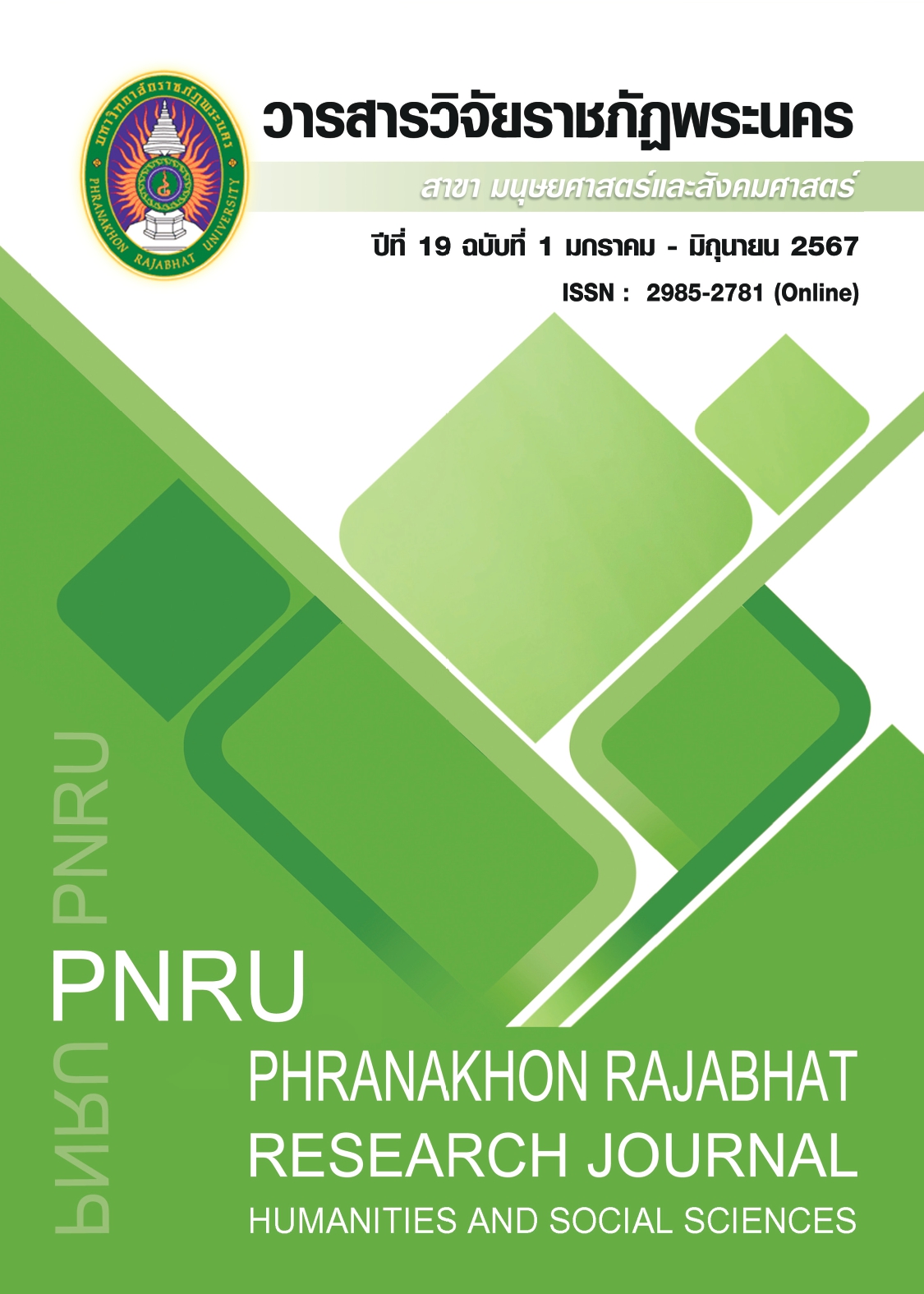A STUDY OF DIFFERENCES BETWEEN PRODUCER AND CONSUMER GROUPS REGARDING PRODUCT PUBLICITY IN ONE TAMBON ONE PRODUCT CASE STUDY HAND WOVEN SILK PRODUCT OF SA KAEO PROVINCE
Main Article Content
Abstract
This research aims to compare the differing factors between producers and consumers regarding the product public relations of One Tambon One Product. The case study focuses on hand-woven silk products from Sa Kaeo province. The sample groups used include members of the entrepreneurial community, customers, and individuals interested in hand-woven silk products. Data was collected using a questionnaire as the primary tool through an online survey conducted from June 1st, 2023, to August 31st, 2023, resulting in a collection of 150 sets. The statistics used to analyze the data consist of descriptive statistics, including percentages, averages, and standard deviations. The relationship between variables was tested using a comparative method among variable groups. The analysis employed Chi-square to categorize based on factors related to communication channels and perceptions of information received from the product public relations of hand-woven silk products.
This research results revealed that factors related to communication channels through social media significantly influence product public relations. Moreover, regarding the perception of product information, respondents had varying opinions on product public relations. These differences included perceptions regarding product reliability, price perception, and the perceived distinctiveness of the product. This suggests that the One Tambon One Product group specializing in hand-woven silk in Sa Kaeo Province needs to enhance their products to align better with public relations requirements. Such improvements could consistently impact the sales of hand-woven silk products over time.
Article Details

This work is licensed under a Creative Commons Attribution-NonCommercial-NoDerivatives 4.0 International License.
Each publish articles were copyright by Phranakorn Rajabhat University
Any contents which appeared in each articles in the journal were authors personal opinion. It did not relate to Phranakorn Rajabhat University and other instructors in the university. Each authors would take responsibility on their articles. If there are any mistake, the authors will take responsibility themselves
References
Jungsiriphonpakorn, A. (2018). Research pattern, population and sample. Retrieved from http://pioneer.netserv.chula.ac.th/~jaimorn/re5.htm [2022, 24 Jun.]
Kimaro, A.(2022). Assessing the impact of brand trust and brand image on consumer behavior during a time of crisis. Vasteras, Sweden: Mälardalen University.
Kingsnorth. S. (2022). Digital Marketing Strategy: An Integrated Approach to Online Marketing. (3). United Kingdom: Kogan Page.
Kongarchaphat, B. (2023). 3 weak points of "Thai OTOP" decode the secrets to create a great Thai brand. Retrieved from https://mgronline.com/business/ detail/ 9620000086178. [2023, 08 Aug.] (In Thai)
Kotler, P. (1965). Behavioral models for analyzing buyers. Journal of Marketing, 29(4), 37-45.
Kotler, P., & Armstrong, G. (2011). Principles of Marketing Prentice Hall. (14). United States: Prentice Hall.
Lavidge, R. J., & Steiner, G. A. (1961). A model for predictive measurements ofadvertising effectiveness. Journal of Marketing, 25(4), 59-62.
Mary, J. B., & Bernard, H. B. (1981). Trends in Travel and Tourism Marketing : The Changing Structure of Distribution Channels. Sage Research: Journals of Travel, 20(1), 2-7.
Ministry of Finance. (2022). Draft State Enterprise Development Plan 2023 – 2027. Office of the State Enterprise Policy Committee. (Report of development plan). Bangkok, Thailand: Ministry of Finance. (In Thai)
Sukcharoen, W. (2019). Market Research. (2). Bangkok, Thailand: Chulalongkorn University Press. (In Thai)
Thomson, K. N., & Coe, B. J. (1997). Gaining Sustainable competitive advantage through strategic pricing. Emerald Journals: Pricing Strategy and Practice, 5(2), 70-79.
Weyl, E. G. (2019). Price Theory. Journal of Economic Literature, 57(2), 329-84.


